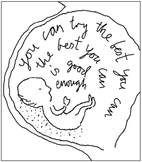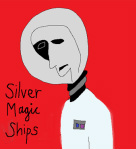
Although the show in question fills only one small room, the ethical issues it raises are momentous. However, as with the concurrent exhibition Devotion by Design: Italian Altarpieces before 1500, the museum authorities have ensured that any contentious matters are only mentioned in the associated publication and not in the gallery (cf. Burch 2011b). The focus of the curators' acclaim rests instead on Eastlake as a pioneer whose influence is still felt to this day:
"His professional approach to the study and management of the Gallery's collection was ground-breaking and set an example that has been followed ever since."(1)
This is undoubtedly true in terms of the museum's collections. But can the same be said when it comes to its attitudes towards visitors?
"The pictures were Eastlake's first priority in everything he did at the National Gallery.
As a result the desire to accommodate visitors and their needs had second place and
definite limits" (Avery-Quash & Sheldon 2011: 174).
This, alas, seems to tally with the curatorial treatment of Eastlake. The "modest, scholarly and determined man" that emerges from the exhibition contrasts with the "wily" operator in Avery-Quash and Sheldon's associated biography (2011: 155). Yet even they are careful to avoid any real criticism. They note that Eastlake had collected privately since 1812, but conclude that:
"It was probably the case that Eastlake limited his own purchases to paintings which he
considered ineligible for the Gallery on grounds of size, state of preservation, or status of
the artist in question. Such an honourable demarcation would have been characteristic
of the man" (Avery-Quash & Sheldon 2011: 162).
This entirely positive stance allows the authors to bypass any awkward questions. Take, for example, Pollaiuolo's The Martyrdom of Saint Sebastian (1475, oil on poplar, 291.5 x 202.6 cm, inventory no. NG292). Eastlake's contemporary, John Morris Moore (1812-85) argued that the methods used to acquire it had violated Tuscan law. Avery-Quash and Sheldon mention this claim and Moore's belief that it has been "smuggled out, using bribery and corruption" before adding: "Moore's aspersions did not have any lasting consequence" (Avery-Quash & Sheldon 2011: 177). But were the accusations true?
Art for the Nation: Sir Charles Eastlake at the National Gallery was a missed opportunity to provide some much-needed historical context to one of the most pressing issues facing museums today: the question of deaccessioning. Changes to the Code of Ethics for Museums now allow for "financially motivated disposal in exceptional circumstances" (2). This, not surprisingly, has given rise to many complex, ethical arguments. There is an urgent need for an informed debate that draws on past practice. A case in point concerns the National Gallery's decision in 1857 to sell thirty-seven paintings from the former Krüger collection. Avery-Quash and Sheldon (2011: 160) remark that "[t]his act is considered unfortunate today, given that important works from this history of German art were irreparably broken up." Why was this affair ignored in the Eastlake exhibition? And why was there no mention of the 1856 "Act to extend the Powers of the Trustees and Director of the National Gallery, and to authorize the Sale of Works of Art belonging to the Public"? This legislation was enacted in response to sellers who only agreed to part with an entire collection of artworks rather than just the specific painting that Eastlake was so eager to acquire. Hence the National Gallery's decision to sell works at Christie's auction house on 14 February 1857. How many current museum professionals are aware of this precedent?
One positive thing about the Eastlake exhibition is that it does occasionally touch upon that most un-museum of subjects: money. We learn, for instance, that Eastlake's most expensive acquisition was the £13,650 spent on Paolo Veronese's The Family of Darius before Alexander (1565-7, oil on canvas, 236.2 x 474.9 cm, inventory no. NG294). Of course, the museum does not see fit to include this figure among the "key facts" about the painting (3). And, whilst visitors to the Eastlake exhibition are given the National Gallery's acquisition budget for 1855 (£10,000), they are not told what the figure is today. Why were the two sums not set side-by-side, thus enabling visitors to compare today's situation with that of 156 years ago?
The answer is because, then as now, "visitors and their needs" take "second place" within very "definite limits". Sir Charles Eastlake can therefore rest easy: his legacy at the National Gallery is indeed secure.
____
Notes
(1) Cited from the interpretation panel "Eastlake's legacy at the National Gallery".
(2) See "Sale of collections", accessed 09/10/2011 at, http://www.museumsassociation.org/collections/sale-of-collections.
(3) "Key facts", accessed 09/10/2011 at, http://www.nationalgallery.org.uk/paintings/paolo-veronese-the-family-of-darius-before-alexander/*/key-facts.
_________
References
Avery-Quash, Susanna & Julie Sheldon (2011) Art for the Nation: The Eastlakes and the Victorian Art World
(London: National Gallery Company)
Burch, Stuart (2011a) "Museum ethics – then and now", 24/07, accessed 09/10/2011 at,
http://www.stuartburch.com/1/post/2011/07/museum-ethics-then-and-now.html
Burch, Stuart (2011b) "Deception by Design", 17/09, accessed 09/10/2011 at,
http://www.stuartburch.com/1/post/2011/09/deception-by-design.html





